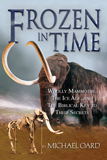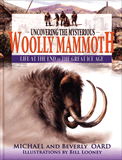Cloning the Woolly Mammoth
Would you be surprised to see woolly mammoths running around in our world today?
Would you be surprised to see woolly mammoths running around in the world today? That is exactly what some scientists are hoping to see within the next five years.

A research team in Japan, made up of scientists from several countries, are working together in their attempt to clone a woolly mammoth. They plan to do this using DNA extracted from frozen woolly mammoth remains found in Siberia. At this point, the scientists do not know if the frozen DNA is too damaged to use.
The scientists want to use an elephant as a surrogate mother. If they are successful, the resulting baby woolly mammoth would actually be part elephant. “The project reminds us that mammoths and elephants were probably part of the same original created kind.”1
So God created the great sea creatures and every living creature that moves, with which the waters swarm, according to their kinds, and every winged bird according to its kind. And God saw that it was good. (Genesis 1:21)
And God made the beasts of the earth according to their kinds and the livestock according to their kinds, and everything that creeps on the ground according to its kind. And God saw that it was good. (Genesis 1:25)
Did you notice the word “kind” in these verses? “The desire to classify modern creatures—based on the original created kinds—has spawned a new field of biology known as baraminology.”2 Baraminology is the study of created kinds, taken from the combination of the Hebrew words bara, which means “created,” and min, which means “kind.”
How does this apply to the woolly mammoth? If scientists are successful in cloning the woolly mammmoth using an elephant mother, this only suggests that the two animals are closely related and probably members of the same kind. It just goes to show that a member of the elephant kind will always be a member of the elephant kind—and it’s been that way from the very beginning!
For more information on baraminology and woolly mammoths, please read the following articles:
Footnotes
- Answers in Genesis, “News to Note, January 22, 2011,” https://answersingenesis.org/answers/news-to-know/news-to-note-january-22-2011/.
- Todd Charles Wood, “Bara-What?" Answers 3, no. 4 (October–December 2008): 33–35.
Recommended Resources
- © 2024 Answers in Genesis
- Privacy Policy
- Contact
- About




